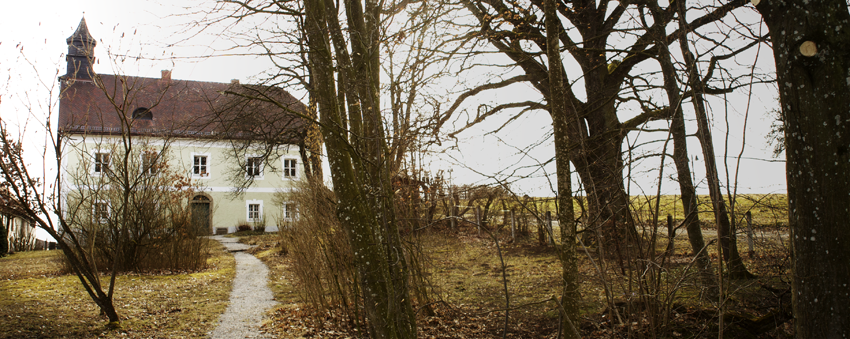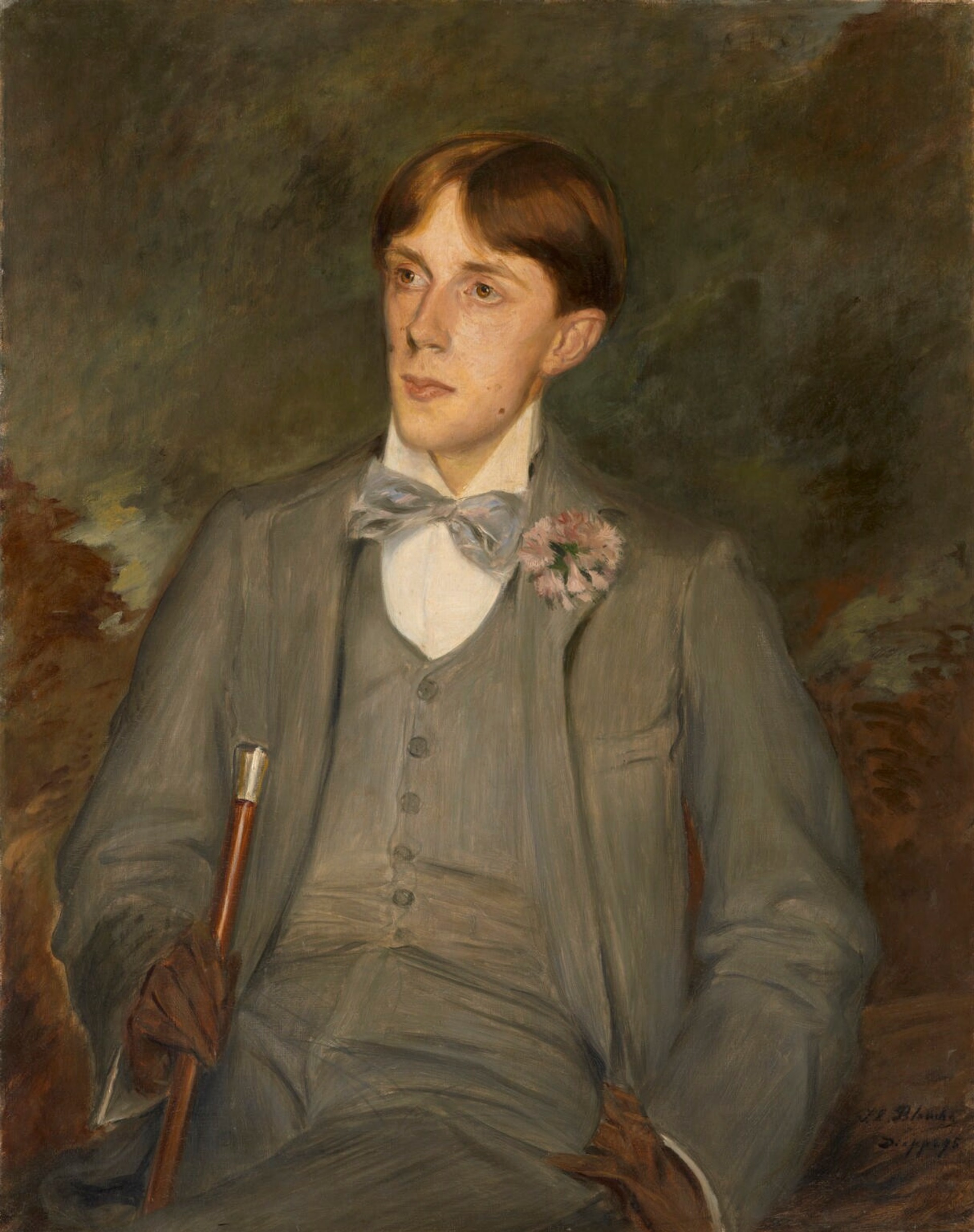|
Marcus Behmer
Marcus Michael Douglas Behmer (1 October 1879 – 12 September 1958), also known by the pseudonyms Marcotino and Maurice Besnaux, was a German illustrator, graphic designer and painter. He was the first well-known German artist to publicly admit to homosexuality. Biography Behmer was born in Weimar, son of the painter Hermann Behmer and grandson of Friedrich Behmer, ''Oberamtmann'' of Merzien (now part of Köthen in Saxony-Anhalt) and his wife Elise, youngest daughter of the poet Philippine Engelhard. His father's twin brother Rudolf Behmer (1831–1902) was known as a breeder of Merino sheep; their sister Louise was married to Heinrich von Nathusius (1824–1890). Marcus' brother Joachim Behmer was also an artist. Behmer, in a letter, dates his artistic beginnings to about 1896. On 1 October 1903, Behmer joined the army. He was made a corporal on 10 June 1904 and promoted on 22 September 1907 to sergeant. From 1914 he served in World War I in Flanders and in Poland. I ... [...More Info...] [...Related Items...] OR: [Wikipedia] [Google] [Baidu] |
Weimar
Weimar is a city in the state of Thuringia, Germany. It is located in Central Germany between Erfurt in the west and Jena in the east, approximately southwest of Leipzig, north of Nuremberg and west of Dresden. Together with the neighbouring cities of Erfurt and Jena, it forms the central metropolitan area of Thuringia, with approximately 500,000 inhabitants. The city itself has a population of 65,000. Weimar is well known because of its large cultural heritage and its importance in German history. The city was a focal point of the German Enlightenment and home of the leading figures of the literary genre of Weimar Classicism, writers Johann Wolfgang von Goethe and Friedrich Schiller. In the 19th century, noted composers such as Franz Liszt made Weimar a music centre. Later, artists and architects such as Henry van de Velde, Wassily Kandinsky, Paul Klee, Lyonel Feininger, and Walter Gropius came to the city and founded the Bauhaus movement, the most important German de ... [...More Info...] [...Related Items...] OR: [Wikipedia] [Google] [Baidu] |
Simplicissimus (magazine)
:''Simplicissimus is also a name for the 1668 novel Simplicius Simplicissimus and its protagonist.'' ''Simplicissimus'' () was a satirical German weekly magazine, headquartered in Munich, and founded by Albert Langen in April 1896. It continued publishing until 1967, interrupted by a hiatus from 1944–1954, and became a biweekly in 1964. It took its name from the protagonist of Grimmelshausen's 1668 novel ''Der Abenteuerliche Simplicissimus Teutsch''. Combining brash and politically daring content, with a bright, immediate, and surprisingly modern graphic style, ''Simplicissimus'' published the work of writers such as Thomas Mann and Rainer Maria Rilke. Its most reliable targets for caricature were stiff Prussian military figures, and rigid German social and class distinctions as seen from the more relaxed, liberal atmosphere of Munich. Contributors included Hermann Hesse, Gustav Meyrink, Fanny zu Reventlow, Jakob Wassermann, Frank Wedekind, Heinrich Kley, Alfred Kubin, Otto ... [...More Info...] [...Related Items...] OR: [Wikipedia] [Google] [Baidu] |
Alfred Kubin
Alfred Leopold Isidor Kubin (10 April 1877 – 20 August 1959) was an Austrian printmaker, illustrator, and occasional writer. Kubin is considered an important representative of Symbolism (arts), Symbolism and Expressionism. Biography Kubin was born in Kingdom of Bohemia, Bohemia in the town of Leitmeritz, Austro-Hungarian Empire (now Litoměřice). From 1892 to 1896, he was apprenticed to the Landscape photography, landscape photographer Alois Beer, although he learned little. In 1896, he attempted suicide on his mother's grave, and his short stint in the Austrian army the following year ended with a nervous breakdown. In 1898, Kubin began a period of artistic study at a private academy run by the painter Ludwig Schmitt-Reutte, before enrolling at the Academy of Fine Arts Munich, Munich Academy in 1899, without finishing his studies there. In Munich, Kubin discovered the works of Odilon Redon, Edvard Munch, James Ensor, Henry de Groux, and Félicien Rops. He was profoundly affe ... [...More Info...] [...Related Items...] OR: [Wikipedia] [Google] [Baidu] |
Zadig
''Zadig; or, The Book of Fate'' (french: Zadig ou la Destinée; 1747) is a novella and work of philosophical fiction by the Enlightenment writer Voltaire. It tells the story of Zadig, a Zoroastrian philosopher in ancient Babylonia. The story of Zadig is a fictional story. Voltaire does not attempt any historical accuracy. The singular narrative and Unique journey of Zadig will stand for eternity as a philosophical reference to “nothing is either good or bad without the comparison of one with the other.” It was originally published as ''Memnon'' in Amsterdam (with a false imprint of London given) and first issued under its more familiar title in 1748. The book makes use of the Persian tale ''The Three Princes of Serendip''. It is philosophical in nature, and presents human life as in the hands of a destiny beyond human control. Voltaire challenges religious and metaphysical orthodoxy with his presentation of the moral revolution taking place in Zadig himself. ''Zadig'' is ... [...More Info...] [...Related Items...] OR: [Wikipedia] [Google] [Baidu] |
Voltaire
François-Marie Arouet (; 21 November 169430 May 1778) was a French Age of Enlightenment, Enlightenment writer, historian, and philosopher. Known by his ''Pen name, nom de plume'' M. de Voltaire (; also ; ), he was famous for his wit, and his criticism of Christianity—especially Criticism of the Catholic Church, of the Roman Catholic Church—and of slavery. Voltaire was an advocate of freedom of speech, freedom of religion, and separation of church and state. Voltaire was a versatile and prolific writer, producing works in almost every literary form, including stageplay, plays, poems, novels, essays, histories, and scientific Exposition (narrative), expositions. He wrote more than 20,000 letters and 2,000 books and pamphlets. Voltaire was one of the first authors to become renowned and commercially successful internationally. He was an outspoken advocate of civil liberties and was at constant risk from the strict censorship laws of the Catholic French monarchy. His polemics ... [...More Info...] [...Related Items...] OR: [Wikipedia] [Google] [Baidu] |
Paul Cassirer
Paul Cassirer (21 February 1871, in Görlitz – 7 January 1926, in Berlin) was a German art dealer and editor who played a significant role in the promotion of the work of artists of the Berlin Secession and of French Impressionists and Post-Impressionists, in particular that of Vincent van Gogh and Paul Cézanne. Starting out Paul Cassirer started out as a student of art history, and then became a writer in 1890s Munich, where he worked for the weekly magazine ''Simplicissimus'' and published two novels. Cassirer moved to Berlin, and he and his cousin Bruno, while still in their mid 20s, opened their gallery on the ground floor of Paul's house in the up-market Viktoriastrasse. The cousins came from a prominent family, whose members included the neurologist Richard Cassirer and the philosopher Ernst Cassirer. Paul was born into a Jewish family. His father, Louis, was an engineer and businessman, whose company — Kabelwerke Dr. Cassirer & Co. — manufactured telegrap ... [...More Info...] [...Related Items...] OR: [Wikipedia] [Google] [Baidu] |
The Fisherman And His Wife
"The Fisherman and His Wife" (Low German: ''Von dem Fischer un syner Fru'') is a German fairy tale collected by the Brothers Grimm in 1812 (KHM 19). The tale is of Aarne–Thompson type 555, about dissatisfaction and greed. It may be classified as an anti-fairy tale.''The Greenwood Encyclopedia of Folktales and Fairy Tales: A-F''article "Anti-fairy tale", p. 50/ref> Origin The tale was published by the Brothers Grimm in the first edition of ''Kinder- und Hausmärchen'' in 1812 as tale no. 19. Their source was the German painter Philipp Otto Runge (1777–1810), from whom the Grimms obtained a manuscript of the tale in 1809. Johann Gustav Büsching published another version of Runge's manuscript a few months earlier in 1812 in ''Volkssagen, Märchen und Legenden'', with some discrepancies with Grimm's version. Synopsis There is a poor fisherman who lives with his wife in a hovel by the sea. One day the fisherman catches a fish, who claims to be able to grant wishes and begs to ... [...More Info...] [...Related Items...] OR: [Wikipedia] [Google] [Baidu] |
Philipp Otto Runge
Philipp Otto Runge (; 1777–1810) was a German artist, a draftsman, painter, and color theorist. Runge and Caspar David Friedrich are often regarded as the leading painters of the German Romantic movement.Koerner, Joseph Leo. 1990. ''Caspar David Friedrich and the Subject of Landscape.'' Yale University Press. New Haven, Connecticut. 256 pp. Rauch, Alexander. 2000. ''Neoclassicism and the Romantic Movement: Painting in Europe between Two Revolutions 1789 – 1848.'' pages 318–479. in Tomam, Rolf, editor. ''Neoclassicism and Romanticism: Architecture, Sculpture, Painting, Drawings, 1750-1848.'' Könemann, Verlagsgesellschaft. Cologne. 520 pp. He is frequently compared with William Blake by art historians, although Runge's short ten-year career is not easy to equate to Blake's career.Connelly, Frances S. 1993. ''Poetic Monsters and Nature Hieroglyphics: The Precocious Primitivism of Philipp Otto Runge.'' Art Journal. 52(2): 31-39. By all accounts he had a brilliant mind and was ... [...More Info...] [...Related Items...] OR: [Wikipedia] [Google] [Baidu] |
Wiener Werkstätte
The Wiener Werkstätte (engl.: ''Vienna Workshop''), established in 1903 by the graphic designer and painter Koloman Moser, the architect Josef Hoffmann and the patron Fritz Waerndorfer, was a productive association in Vienna, Austria that brought together architects, artists, designers and artisans working in ceramics, fashion, silver, furniture and the graphic arts. The Workshop was "dedicated to the artistic production of utilitarian items in a wide range of media, including metalwork, leatherwork, bookbinding, woodworking, ceramics, postcards and graphic art, and jewelry." It is regarded as a pioneer of modern design, and its influence can be seen in later styles such as Bauhaus and Art Deco. Following World War I, the workshop was beset by financial troubles and material shortages. Attempts to expand the workshop's base were unsuccessful, as was a reorganization under the direction of Austrian artist Philipp Häusler. In 1926, Workshop financier Otto Primavesi's bank faile ... [...More Info...] [...Related Items...] OR: [Wikipedia] [Google] [Baidu] |
Expressionism
Expressionism is a modernist movement, initially in poetry and painting, originating in Northern Europe around the beginning of the 20th century. Its typical trait is to present the world solely from a subjective perspective, distorting it radically for emotional effect in order to evoke moods or ideas. Expressionist artists have sought to express the meaningVictorino Tejera, 1966, pages 85,140, Art and Human Intelligence, Vision Press Limited, London of emotional experience rather than physical reality. Expressionism developed as an avant-garde style before the First World War. It remained popular during the Weimar Republic,Bruce Thompson, University of California, Santa Cruzlecture on Weimar culture/Kafka'a Prague particularly in Berlin. The style extended to a wide range of the arts, including expressionist architecture, painting, literature, theatre, dance, film and music. The term is sometimes suggestive of angst. In a historical sense, much older painters such as Matthia ... [...More Info...] [...Related Items...] OR: [Wikipedia] [Google] [Baidu] |
Aubrey Beardsley
Aubrey Vincent Beardsley (21 August 187216 March 1898) was an English illustrator and author. His black ink drawings were influenced by Woodblock printing in Japan, Japanese woodcuts, and depicted the grotesque, the decadent, and the erotic. He was a leading figure in the Aestheticism, aesthetic movement which also included Oscar Wilde and James McNeill Whistler. Beardsley's contribution to the development of the Art Nouveau and poster art, poster styles was significant despite his early death from tuberculosis. He is one of the important Modern Style (British Art Nouveau style), Modern Style figures. Early life, education, and early career Beardsley was born in Brighton, Sussex, England, on 21 August 1872 and christened on 24 October 1872. His father, Vincent Paul Beardsley (1839–1909), was the son of a Clerkenwell jeweler; Vincent had no trade himself (partly owing to inherited tuberculosis, from which his own father had died aged only 40), and relied on a private income ... [...More Info...] [...Related Items...] OR: [Wikipedia] [Google] [Baidu] |







